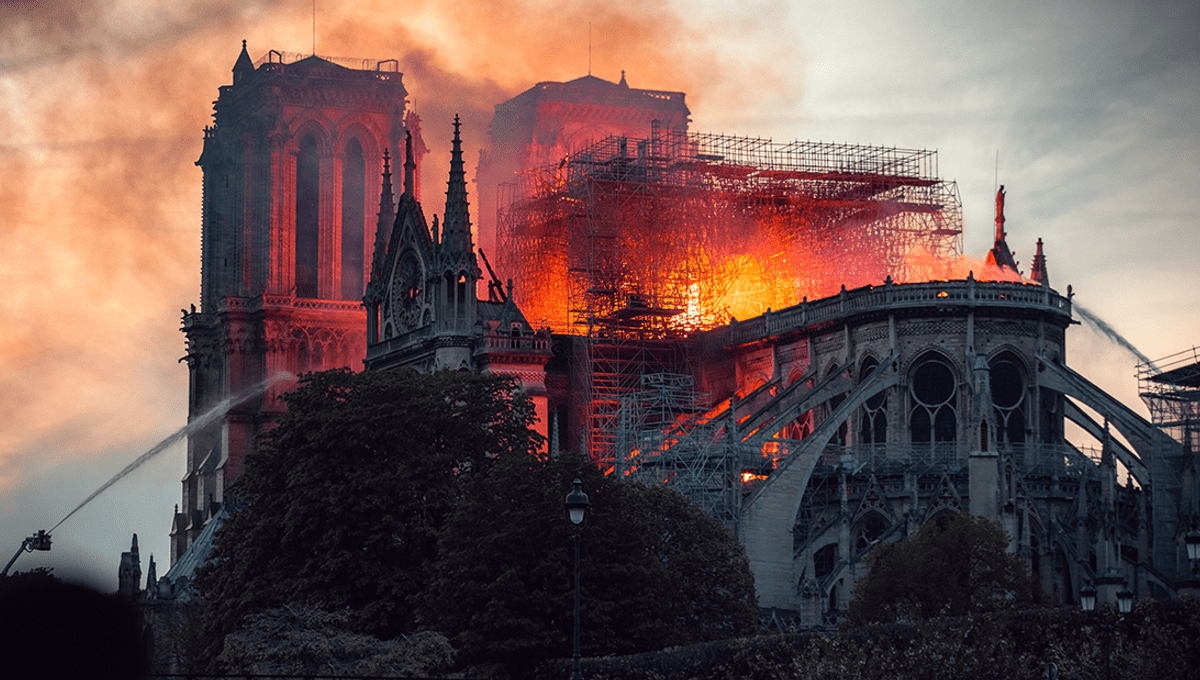
Archaeologists have put on protective clothing and opened two unusual lead sarcophagi found buried beneath Notre-Dame.
After the famous Notre-Dame cathedral burned to the ground in 2019, a number of incredible finds were made beneath the scorched ruins. Among them were two unusual lead sarcophagi, buried beneath the cathedral hundreds of years before, and separated by hundreds of years.
Carefully opening up the sarcophagi while wearing clothing to protect them from the lead, researchers from the University of Toulouse found the remains of two wealthy men, showing signs of a tough life.
One of the bodies was easily identified as Antoine de la Porte, thanks to an epitaph that remained largely intact.
“THIS IS THE BODY OF MR ANTOINE OF THE CANON PORTE OF THE CHURCH,” the epitaph reads, according to a statement. “DEATH DECEMBER 24, 1710 IN HIS 83RD YEAR. REST IN PEACE”.
The coffin was made of lead to help preserve the body, a fate available only to the wealthy of the time, but unfortunately the coffin was not intact and the body had decomposed significantly, leaving just the bones, hair, and a few fragments of textiles. His bones showed evidence of a sedentary lifestyle, as well as gout, a disease sometimes caused by eating and drinking to excess.
De la Porte was a canon, according to the team, explaining his placement underneath a central part of the transept, reserved for the important. During his life he was influential and wealthy, commissioning several paintings that now hang in the Louvre, and paying for renovations to the cathedral itself.
The occupant of the second sarcophagus remains more of a mystery. The body appears to be that of a 25- to 40-year-old male, who likely rode horses from an early age. Leaves and flowers were discovered on his skull and abdomen.
Though he was placed in a part of the cathedral that suggests importance or prominence, it’s not yet known who he was, nor what century he lived through. The bones showed signs of chronic disease, while most of his teeth had been destroyed prior to his death. The aristocrat also showed signs of a deformed skull, likely from wearing a headdress as a baby.
Currently nicknamed “Le Cavalier” it’s possible that the body could yet be identified.
“If the date of his death was around the second half of the 16th century or early 17th century, we may be able to identify him in the death register that we have,” lead scientist Christophe Besnier said in a press conference, as reported by The Guardian. “If it’s earlier than that, we probably won’t ever know who he was.”
Fortunately, the man’s skull had been sawn off after his death, suggesting that the team might be in luck.
“The horseman’s skull had been sawn off and his chest opened to be embalmed,” professor of biological anthropology at the University of Toulouse, Eric Crubézy told Live Science. “This was common practice in the nobility after the [mid 16th century].”
The bones show signs of reactive bone (the formation of new bone following injury), suggesting that the cause of death could be chronic meningitis resulting from tuberculosis. The team will continue to investigate the bodies and publish more findings in the coming months.
Source Link: Archaeologists Have Opened The Unusual Lead Sarcophagi Buried Beneath Notre-Dame